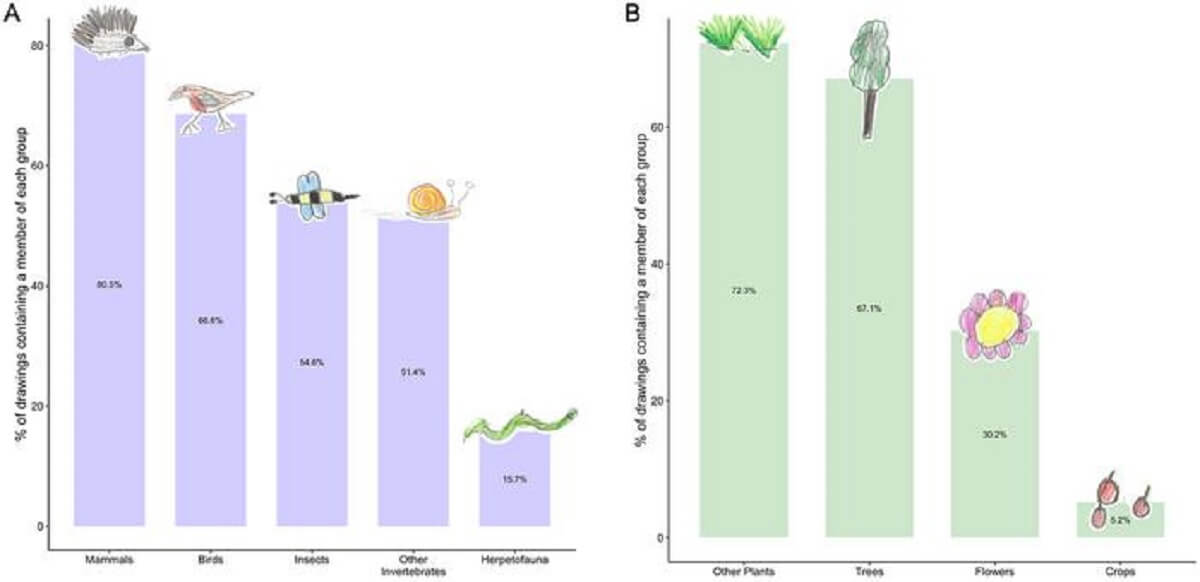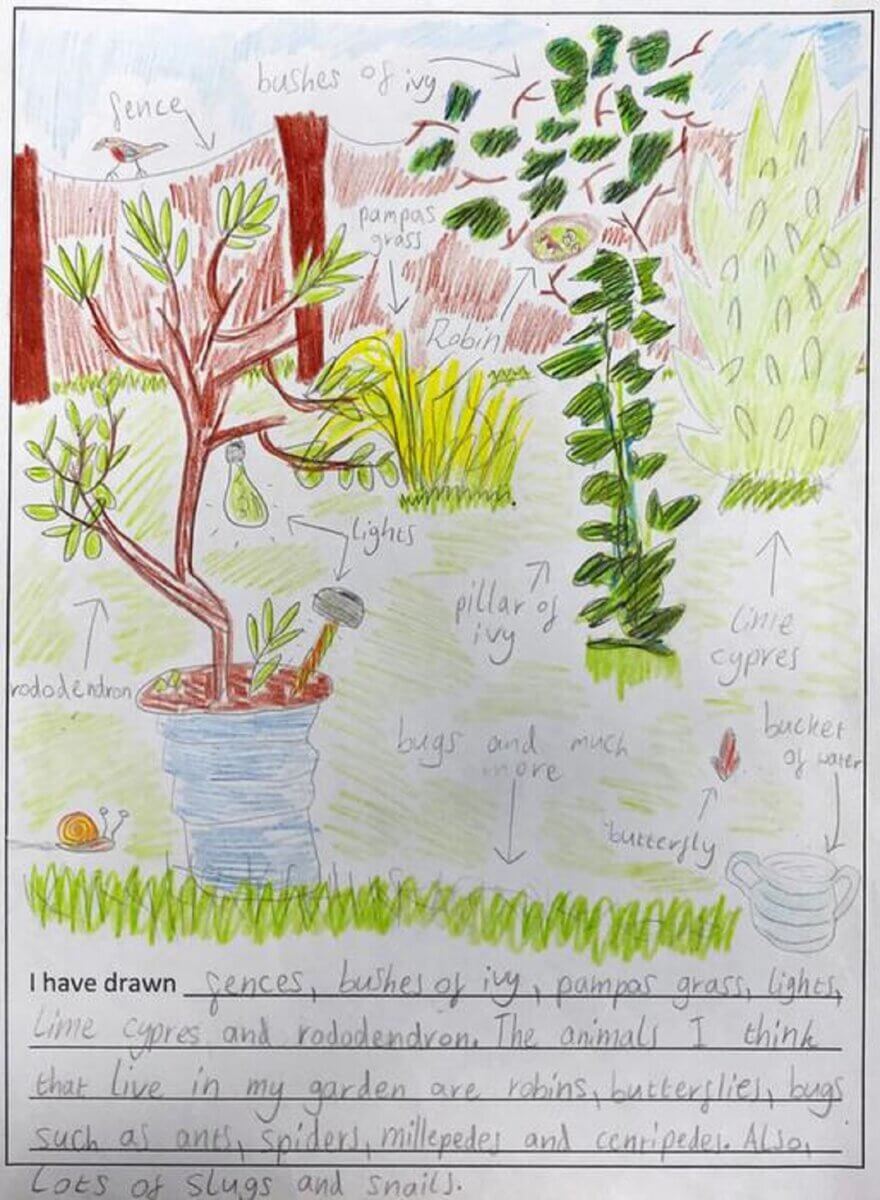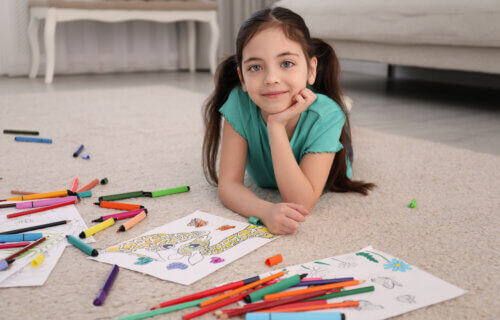CAMBRIDGE, United Kingdom — Mammals and birds are the most frequently drawn animals by children, suggesting a preference or greater familiarity with these species. Conversely, amphibians and reptiles were least likely to be represented in the children’s artwork, a trend researchers claim shows an “imbalance” in their ecological awareness.
A new study asked schoolchildren between seven and 11 years-old in the United Kingdom to depict local wildlife through their drawings. They primarily chose mammals like squirrels, cats, and hedgehogs, as well as birds, over other types of animals.
Previous research shows that access to green spaces for children in Europe and North America has decreased over the past few decades, implying a growing disconnection from nature. Such a disconnect could negatively impact cognitive development in children and potentially diminish future support for conservation efforts, according to the researchers.
In this study, the team analyzed drawings by over 400 schoolchildren from 12 English schools, each asked to illustrate and label the animals found in their gardens or local parks. Mammals were represented in 80.5 percent of the pictures, making them the most commonly drawn animals, followed by birds, appearing in just under 69 percent of the drawings.

Insects and other invertebrates were less frequently depicted, while amphibians and reptiles were least common, appearing in just over 15 percent of the artwork. Despite not being explicitly asked to include plants, the children featured them in over 91 percent of their drawings.
The children’s depictions of mammals and birds were the most detailed, allowing researchers to identify most of these species. Conversely, insects, reptiles, amphibians, and other invertebrates were more challenging to recognize. Among the plants, trees, and crops, strawberries, potatoes, and carrots were most identifiable.
These findings led researchers to conclude that children’s ecological awareness focuses on mammals and birds. Moreover, they suggest that a child’s ecological consciousness may be more strongly influenced by their home environment or cultural background than their school type.

The study’s authors urge an expansion of efforts to enhance ecological awareness, recommending adjustments to national school curricula and the enlargement of school green spaces.
“Children’s perceptions of the local wildlife with which they share their gardens and local parks are skewed towards mammals and birds. Not only do children draw mammals and birds more often than they draw invertebrates, amphibians or reptiles, but they are also able to identify them more precisely than they are the smaller, less charismatic groups,” says study co-author Kate Howlett, a Ph.D. student from the University of Cambridge’s Department of Zoology, in a media release.
“While this is perhaps unsurprising, given that it mirrors similar slants in wider media and culture, biases in children’s perceptions of the natural world hint at a wider problem of nature disconnect and attrition of ecological knowledge, and suggest we need to readdress these biases as a matter of urgency.”
The study is published in the scientific journal PLoS ONE.
South West News Service writer Stephen Beech contributed to this report.

